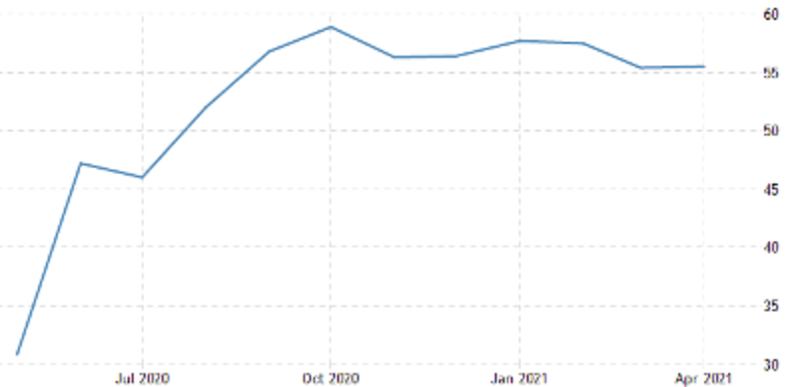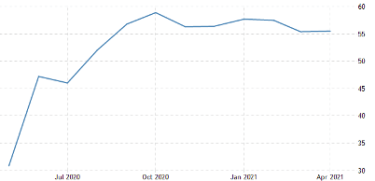These days, one cannot pick up a newspaper or browse an electronic news feed without being confronted with the human tragedy unfolding in India due to the COVID-19 pandemic’s second wave. At the beginning of May, India – home to around 1.4 billion people, or 18% of the world’s population – accounted for 46% of new COVID-19 cases globally. AMT has employees, colleagues, and family of staff in country, so the concern is palatable, and we pray for them and the country each day.
By emotional contrast, we have happily shared with our readers over the last year the economic developments, policy shifts, and public programs that have created vast opportunities for growth in India’s manufacturing sector. AMT members have reached out for our opinion on how this new level of the health crisis will affect the trajectory of this growth. We believe the affect will be marginal, and the experts’ recent forecasts reinforce that view.
April saw a dramatic surge in COVID-19 as cases per day surpassed 200,000, adding to the more than 20 million reported cases since the beginning of the pandemic. Yet, the manufacturing purchasing managers’ index (PMI) for April remained strong at 55.5, beating market consensus of 51.6 and indicating a solid improvement in the health of the sector. At the same time, according to Markit Economics, new export orders surged to the fastest pace since last October, and buying levels expanded at one of the sharpest rates in nine years.




At the end of April, the Asian Development Bank (ADB) published its Asian Development Outlook (ADO) 2021 with last-minute editing to include the very recent pandemic trends. The ADB still predicts India’s GDP will rebound strongly at 11% in FY 2021 due to continued economic recovery stimulated by increased public investment, the vaccine rollout, and the surge in domestic demand. According to Arun Mahajan, the general manager of AMT’s Chennai Tech Center, “The ADB’s growth projection is mirrored by various other rating agencies like Goldman Sachs, Nomura, JPMorgan Chase, and the International Monetary Fund (IMF).”
According to the ADO, “Manufacturing will benefit from the creation of mega textile parks and an expanded Production Linked Incentive (PLI) Scheme, which helps to integrate domestic manufacturers with global supply chains as well as rewarding higher domestic production.” As we previously reported in January, the PLI scheme has earmarked $3 billion in government subsidies to foster the EV industry and another $20 billion for 10 different manufacturing sectors. Separate from the PLI Scheme, the government plans to spend $66 billion to expand the country’s natural gas infrastructure, and there is a five-year, $100 billion program to develop electronics manufacturing. Additionally, the forecast of a normal monsoon and bumper harvest of summer crops will further boost the agriculture sector and demand for related equipment.
The uncertain trajectory in this second wave of the pandemic remains a risk to the outlook, of course. India has gone back into lockdown, which could have short-term effects on the May and June PMI. However, all indications and recent history suggests that India will continue its path of economic recovery and opportunity. We will continue to monitor both the health and economic developments closely. In the meantime, send a prayer India’s way.
India’s Manufacturing PMI has remained strong despite rising COVID-19 infections.
“The ADB still predicts India’s GDP will rebound strongly at 11% in FY 2021 due to continued economic recovery stimulated by increased public investment, the vaccine rollout, and the surge in domestic demand.”
For more information, contact Ed Christopher at echristopher@AMTonline.org.






